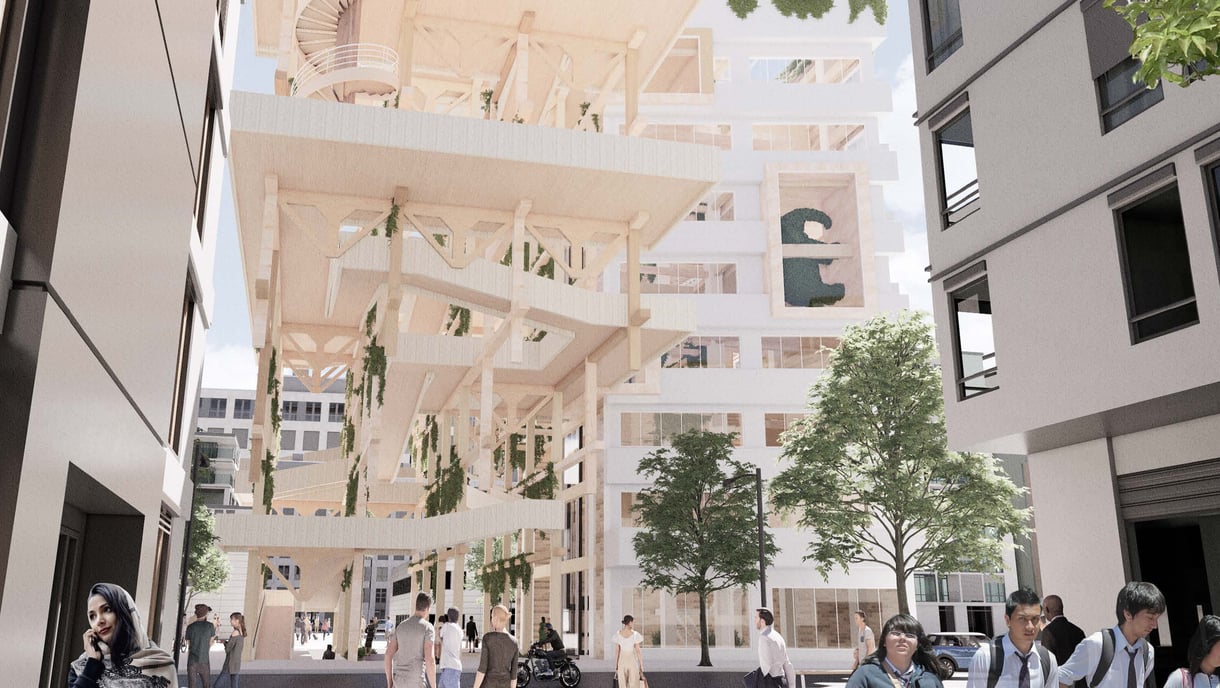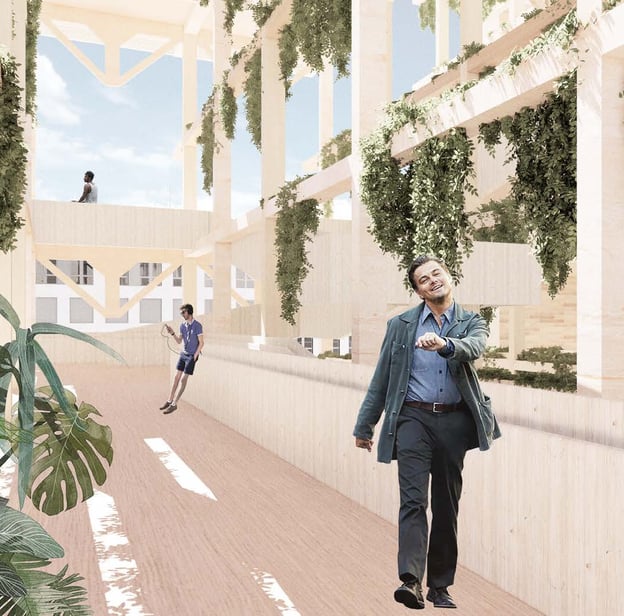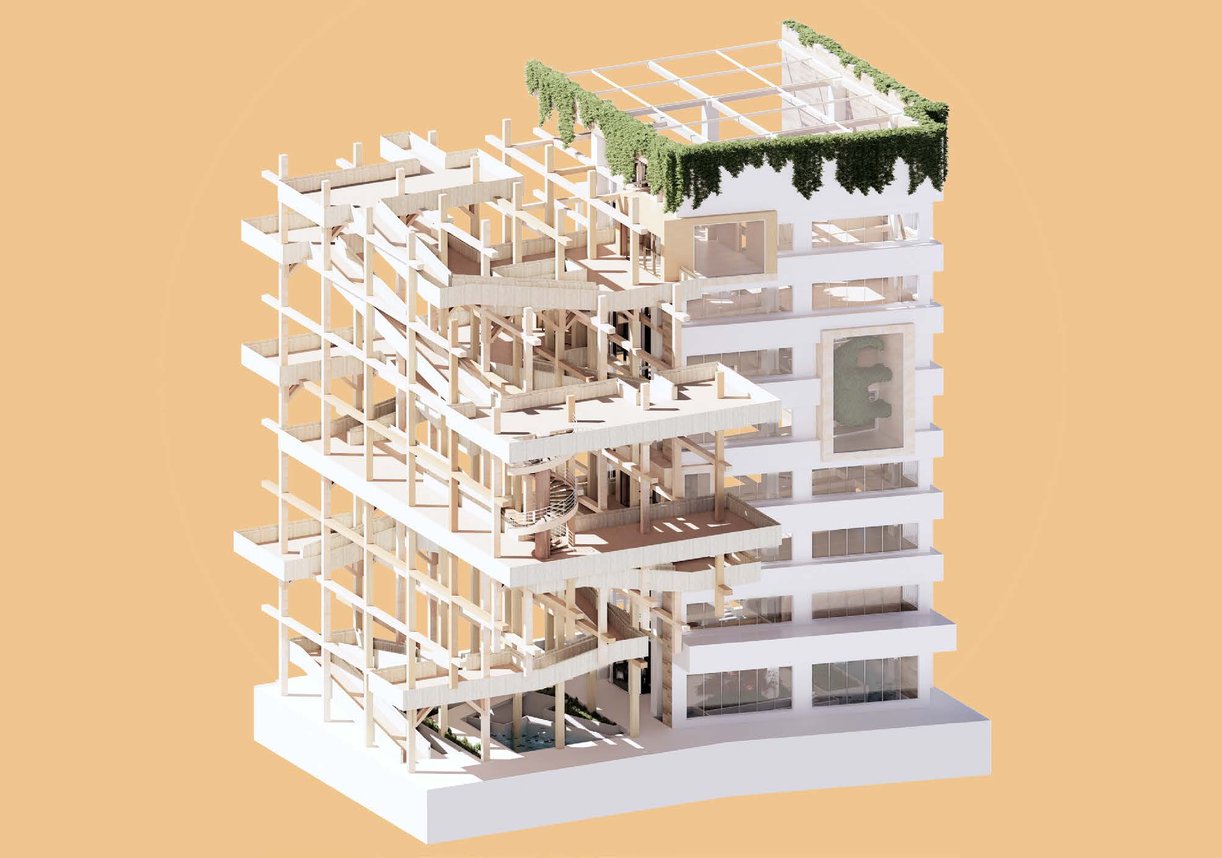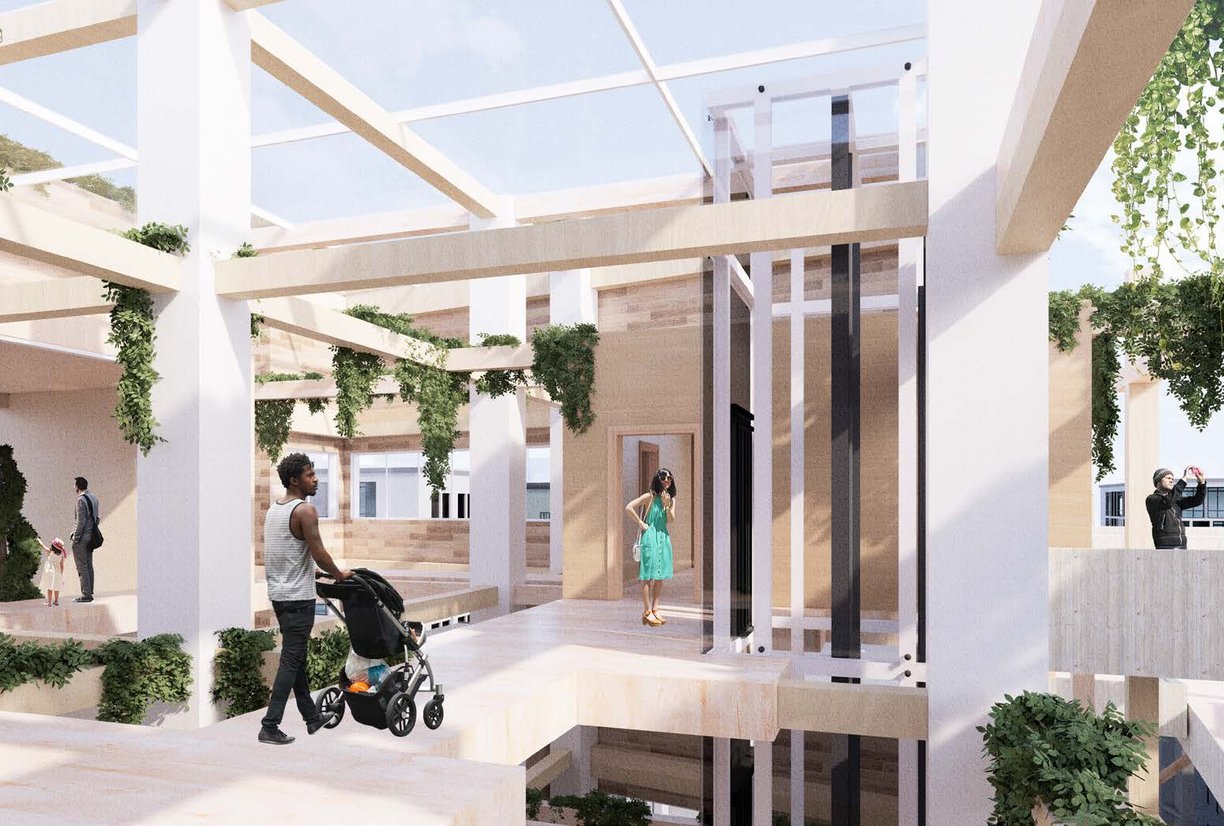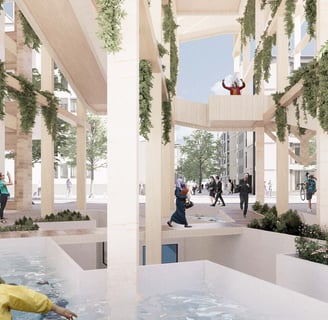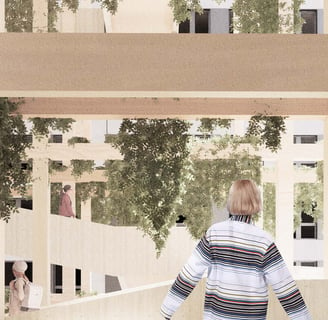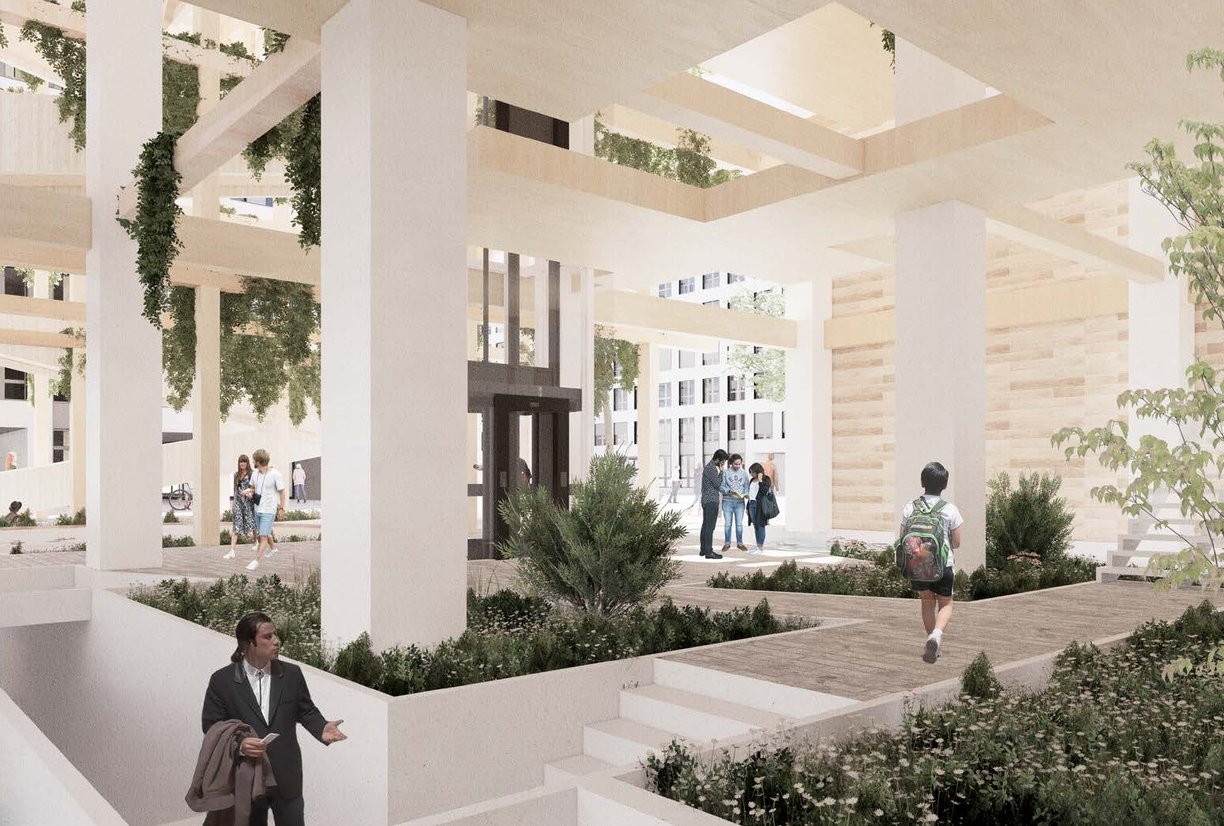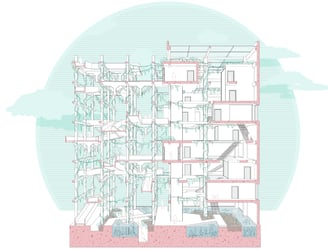In the book The Landscape Urbanism Reader, Charles Waldheim describes the landscape as a medium to solve the problems of contemporary cities and the infrastructure of the future to support urban development, to preserve the vitality of natural systems and regional cultures. I believe the site is more than suitable for landscape development, honouring the history, culture, and connecting the separated space.
This design fades the border between building and landscape (as well as indoor and outdoor space) and honours the original shoreline by integrating urban hardscape and natural soft-scape.
Firstly, the design reduced the building footprint of the west side to provide a long sightline from High St. to Britomart and an open environment. Then an exterior timber framework with walkable platform was created to use the vertical space that increases the volume of the natural landscape, and also rovides a better connection with urban space. Secondly, the interior space was divided into many small blocks by the grid of the exterior framework, deleted 90% of them, turned the reserved blocks into several gallery boxes, and added walk paths and stairs to create an organic interior space. Finally, the connection of the ground floor was enhanced by developing an underground space, including ardens for underwater and wetland species, and underground square and corridor.
